Thinning Grass? Patches Everywhere? Why Overseeding Is Your Answer
Reading time: 5 - minutesSo, if your lawn’s looking like this…
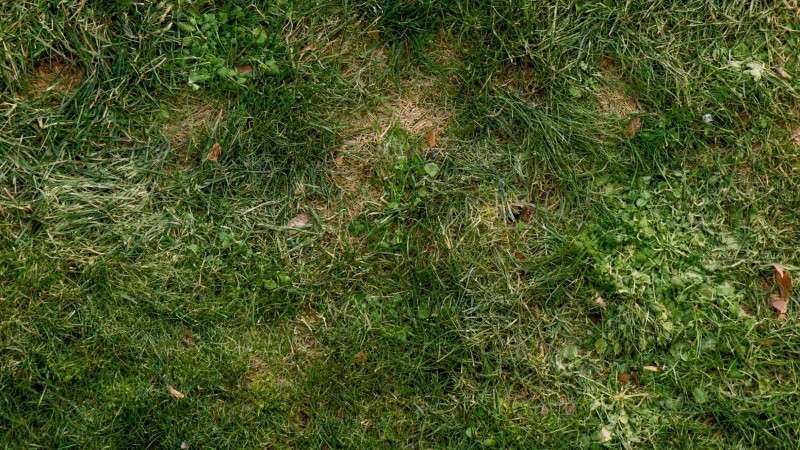
…or this:
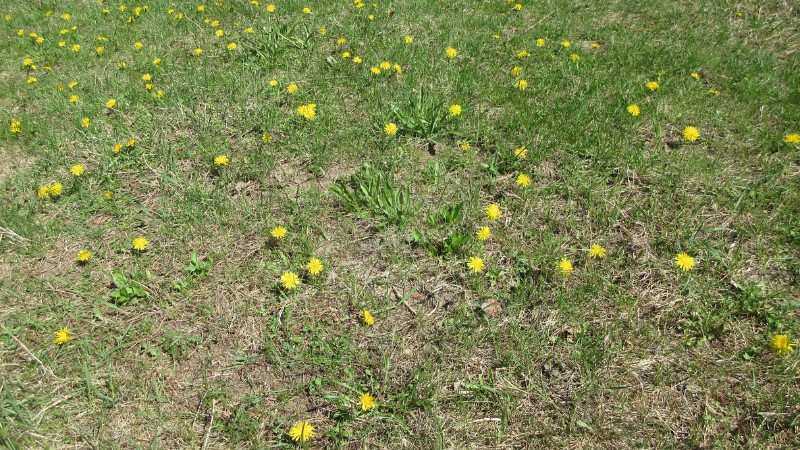
And you want it to look like this:
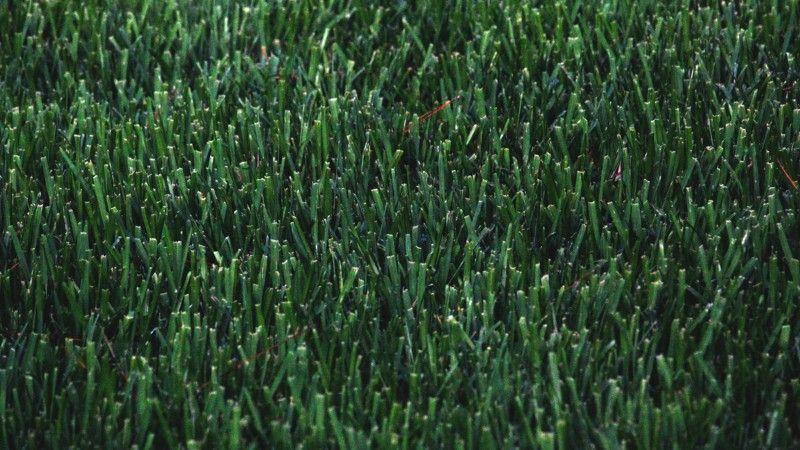
…you need overseeding.
As soon as temperatures go up, you see your neighbour’s head over to their nearest garden centers, trying to get their hands on some quality grass seeds for overseeding.
But while simple, there’s a science to overseeding that you should know if you want real results—you know, super thick green grass that can withstand a weed “takeover”.
That’s what we’re here to talk about.
But, Why Does Your Lawn Get Patchy In The First Place?
Here’s what’s really going on beneath that melting snow:
- Dog Spots. If you’ve got a furry friend, you’ve probably seen those yellow or brown patches scattered across your lawn. Dog urine is high in nitrogen, and while a little nitrogen is good, concentrated amounts can burn grass, especially in the same spots over and over. Female dogs (who tend to squat in one area) and larger breeds often cause more noticeable damage.
- Poor Drainage. Melting snow can saturate the soil, and if your lawn doesn’t drain well, standing water can lead to root rot or suffocate grass. Low spots tend to suffer the most.
- Temperature Swings. Those early spring warm-ups, followed by sudden cold snaps, can shock grass plants, damaging new growth and delaying recovery.
- Lack of Sunlight. Snow and leaf buildup can block light for months, weakening grass and making it vulnerable to disease or die-off.
- Snow Mould. This common fungal disease thrives under snow cover and can leave behind straw-like, matted patches once the snow disappears. It’s especially common in areas where snow piles linger the longest.
- Salt Damage. Road salt and de-icing products can sometimes leach into the soil and burn grass roots, especially near sidewalks, driveways, and boulevards. The result? Brown, brittle patches that struggle to bounce back.
- Compacted Soil. Snow load and foot traffic compact the soil over winter, suffocating roots and making it harder for water and nutrients to reach where they’re needed most.
- Vole Tunnels. In some areas, voles (tiny rodents) burrow beneath the snow, carving out little highways that destroy turf and expose roots.
What Is Overseeding (and Why Your Lawn Needs It After Winter)
Overseeding is exactly what it sounds like—spreading new grass seed over your existing lawn without tearing it up. This method is one of the most effective ways to revive a thin, tired lawn.
When done right, overseeding thickens turf, fills in bare patches, and helps your lawn outcompete weeds before they take over. At Green Drop, we pair overseeding with aeration to maximize seed-to-soil contact and ensure your investment pays off.
So, why spring? Because your lawn is already waking up. The soil is warming, moisture levels are still high, and weeds haven’t hit full stride yet. Seeding now gives new grass the best possible shot to take root and establish before the summer heat kicks in.
Here’s what makes spring overseeding a smart move:
- Fills in winter damage: Snow mould, salt burn, and compacted soil often leave lawns looking rough. Overseeding helps you bounce back faster.
- Boosts density: Thicker turf shades the soil, reducing water evaporation and helping regulate soil temperature.
- Improves drought tolerance: More grass means deeper roots and better moisture retention when the weather heats up.
- Refreshes tired grass: Older lawns lose vigour over time. Newer seed varieties are bred for resilience, better colour, and lower maintenance.
- Outcompetes weeds before they settle in: A thick lawn makes it tough for dandelions, crabgrass, and clover to gain a foothold.
- Increases lawn uniformity: Overseeding evens out patchy colour and texture caused by aging turf or mixed grass types.
- Repair foot-traffic damage: High-use areas, like paths or kids’ play zones, benefit from fresh grass to restore resilience.
- Builds lawn resilience year-over-year: Regular overseeding creates a self-sustaining lawn that handles stress and recovers more easily.
When Should You Overseed in Spring
Spring overseeding isn’t a “whenever-you-feel-like-it” project. To get the best results, you need to hit the sweet spot after the last frost but before the summer heat kicks in.
For most areas in Western Canada, that’s typically late April through May, depending on your location and how long winter lingers. This gives your cool-season grasses (like Kentucky bluegrass, fescue, and perennial ryegrass) the ideal temperatures to germinate and establish before the hotter months arrive.
- Seed needs warm soil, not just air, to sprout.
- Overseeding too early risks frost damage.
- Too late, and weeds get the jump, or heat dries out tender seedlings.
- Spring rain helps keep the soil evenly moist (perfect for germination).
Make sure you check the soil temp, not just the calendar. You’re aiming for 10°C (50°F) or higher at root level for successful germination.
Step-by-Step: How to Overseed Your Lawn This Spring
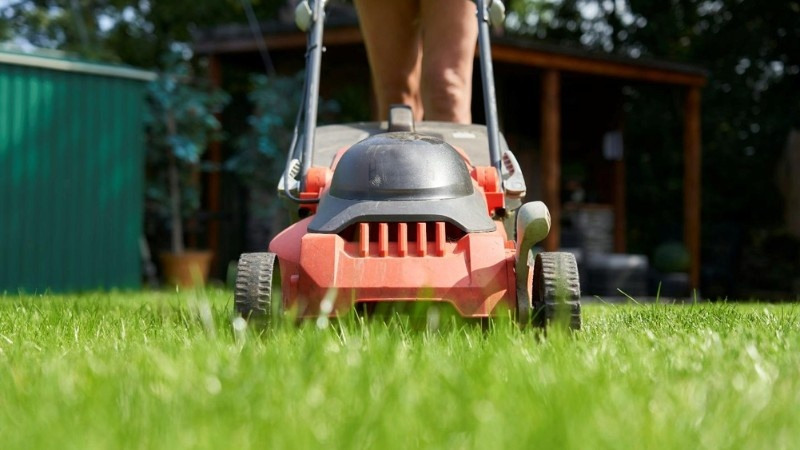
Spring can be unpredictable, so setting the stage is half the battle. Here’s an overseeding checklist for you:
Start with a proper mow. Cut your grass shorter than usual (but not scalped) to give new seed sunlight and room to grow. Clear away debris, dead grass, and leftover thatch so nothing blocks your seedlings from making soil contact.
Aerate before seeding. This step is gold. Aeration loosens compacted soil and creates perfect little pockets for seed to settle in. Always aerate before overseeding to give your lawn the best shot at thick, even growth.
Choose the right seed. Not all seed blends are created equal. Use a cool-season grass mix suited to Western Canada’s climate. We’ll help match your lawn’s needs with the right variety.
Water like a pro. Light, frequent watering is key. Make sure it’s enough to keep the seedbed consistently moist, especially for the first 2–3 weeks. Avoid heavy foot traffic during this time so seedlings can anchor without stress.
Mulch your clippings. Once you’re mowing again, skip the bag. Leaving clippings helps retain moisture and protects young grass shoots from drying out.
Skip the weed control for now. Avoid applying herbicides right after overseeding. Most weed control products can interfere with seed germination, so wait at least 4–6 weeks before any applications.
Fertilize after germination starts. Once new grass has sprouted, a light starter fertilizer can support root development and encourage strong, steady growth.
Estimated timelines: You’ll see results in 2–3 weeks
DIY vs. Hire Pros for Overseeding
Overseeding can absolutely be a DIY project—but whether you should do it yourself depends on the state of your lawn, your comfort with lawn care, and how much time you’re willing to invest.
Here’s a breakdown:
DIY Overseeding Might Work If…
- Your lawn is fairly healthy with just a few thin patches or cosmetic issues.
- You’ve overseeded before and feel confident prepping the soil, choosing the right seed, and following a consistent watering schedule.
- You enjoy yard work and have access to basic tools like a spreader and aerator (or are willing to rent them).
Just know: most DIY overseeding issues happen when soil isn't properly prepped, seed isn’t the right type for your region, or watering gets missed. Even small slip-ups can mean patchy growth and wasted time.
Consider Hiring a Pro If…
- Your lawn is older, heavily compacted, or hasn’t bounced back well after winter.
- You’re dealing with persistent issues like weeds, bare spots, poor drainage, or disease.
- You’re starting from scratch with a new lawn that needs expert guidance for strong establishment.
- You want the job done right the first time, with zero guesswork.
We pair overseeding with aeration to get the best seed-to-soil contact, use region-specific blends that thrive in your climate, and time the job for optimal germination. You'll also get personalized aftercare tips to keep your lawn thriving.
Grass Isn’t Greener Unless You Reseed It
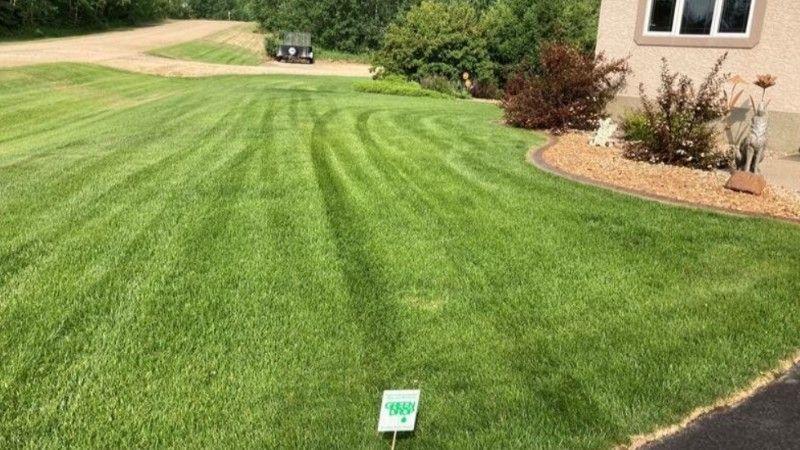
Spring lawn struggles aren’t uncommon. With expert lawn care, you can revitalize your grass.
Whether you’re battling bare patches, post-winter damage, or just want a lawn that turns heads (in a good way), a little spring overseeding goes a long way.
And you don’t have to do it alone. Green Drop’s aeration and overseeding services are designed to give your yard the fresh start it deserves. We serve happy lawns across Red Deer, Edmonton, Calgary, Winnipeg, Regina, and Saskatoon.
We’re here to turn your post-winter lawn into the envy of the block!

